Regular readers will know that I’ve been in the market for SSD drives. While I was shopping, I couldn’t help but notice that there were a lot of cheap — very cheap — 16TB external M.2 SSD drives being offered by no-name sellers.
Now 16TB M.2 SSDs do indeed exist, but they’re not $20.
Try closer to $3,000.
OK, so while I knew it was a scam, I had to find out what made these fake drives tick.
So, I bought one.
Don’t worry, the scammers don’t benefit from this sale because I always claim a refund and report the seller for selling fake products.
I’d ordered this fake drive about a month ago, and today it arrived, and I was so excited that I ripped it out of the box and plugged it into a system (an isolated, sacrificial system, there’s no way I’m plugging a random drive into my main systems).
Now, I was expecting one of those cheap, low-capacity drives that had been modified to look like a 16TB monster.
What I go was even more disappointing.
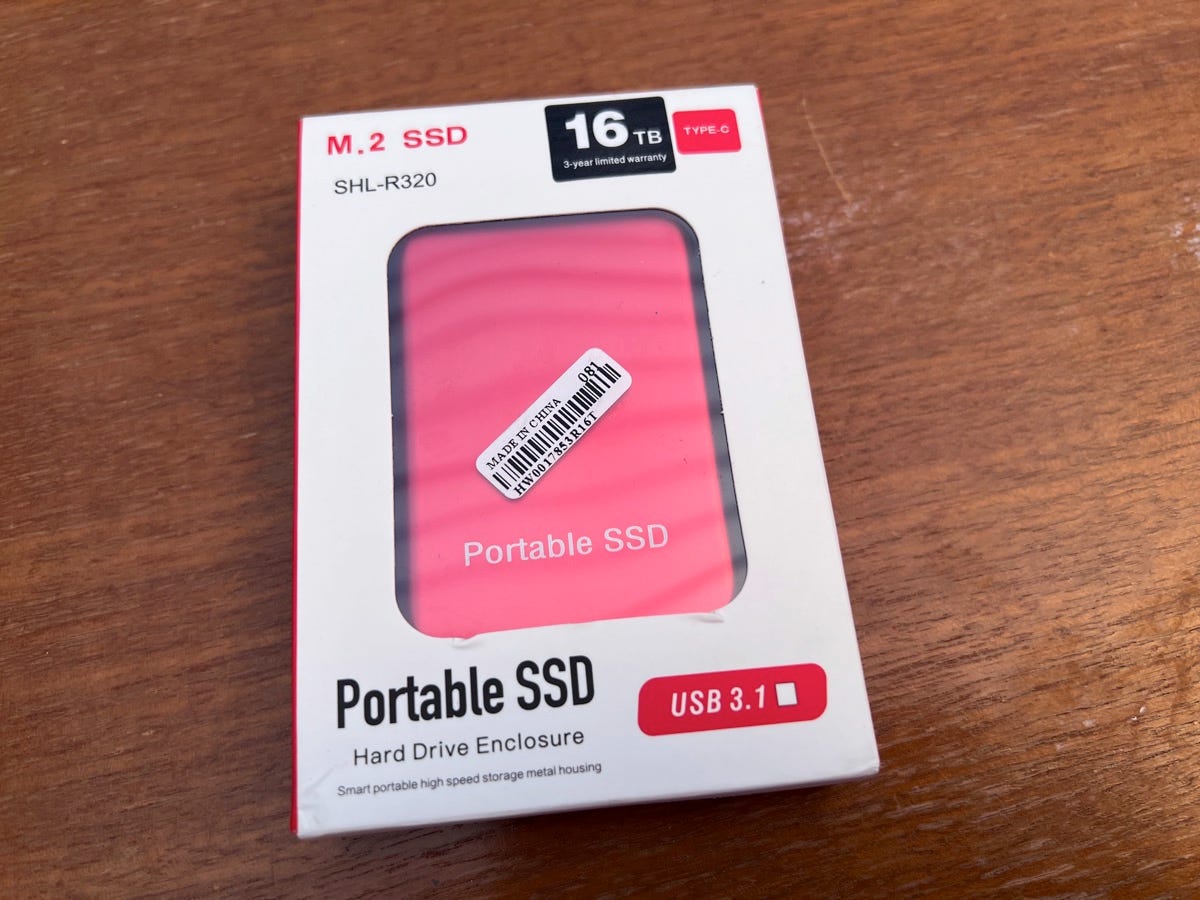
Here’s the drive I received in the mail! On the face of it, it looks good.
Lots of promises of M.2 drive goodness on the packaging.
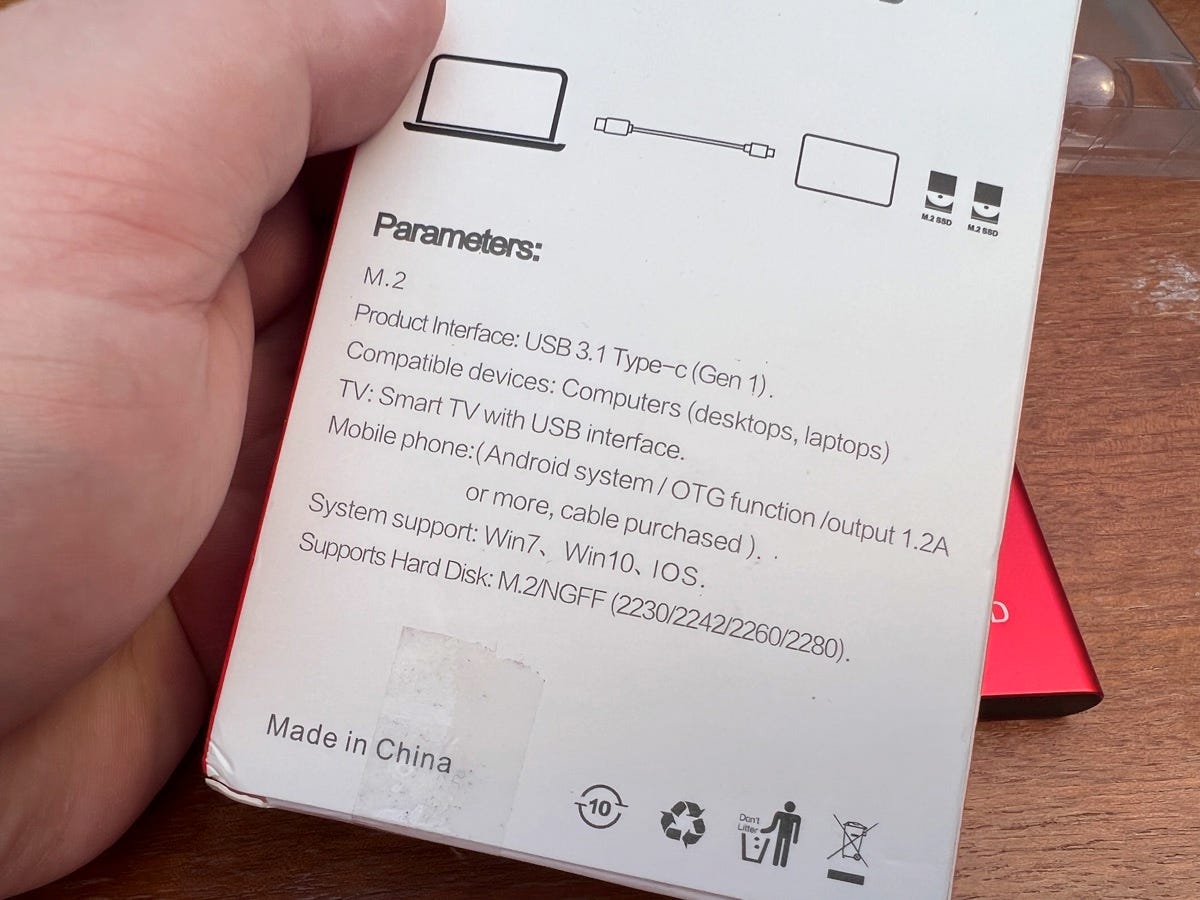
Promises, promises
The packaging looks good. Looks like a genuine product.
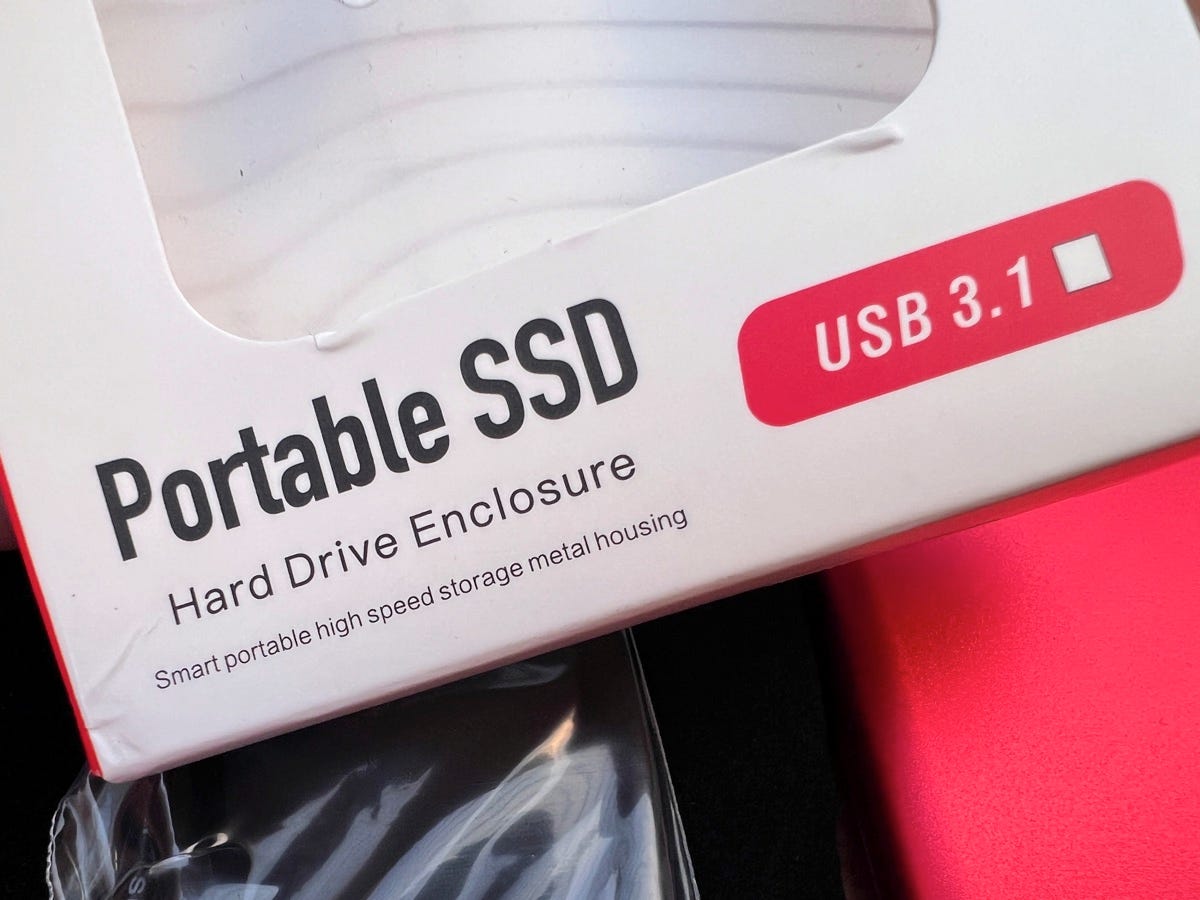
I got the drive out of the box, plugged it into a test system (I’m not plugging a random drive into my main system).
Surprise, the drive didn’t work.
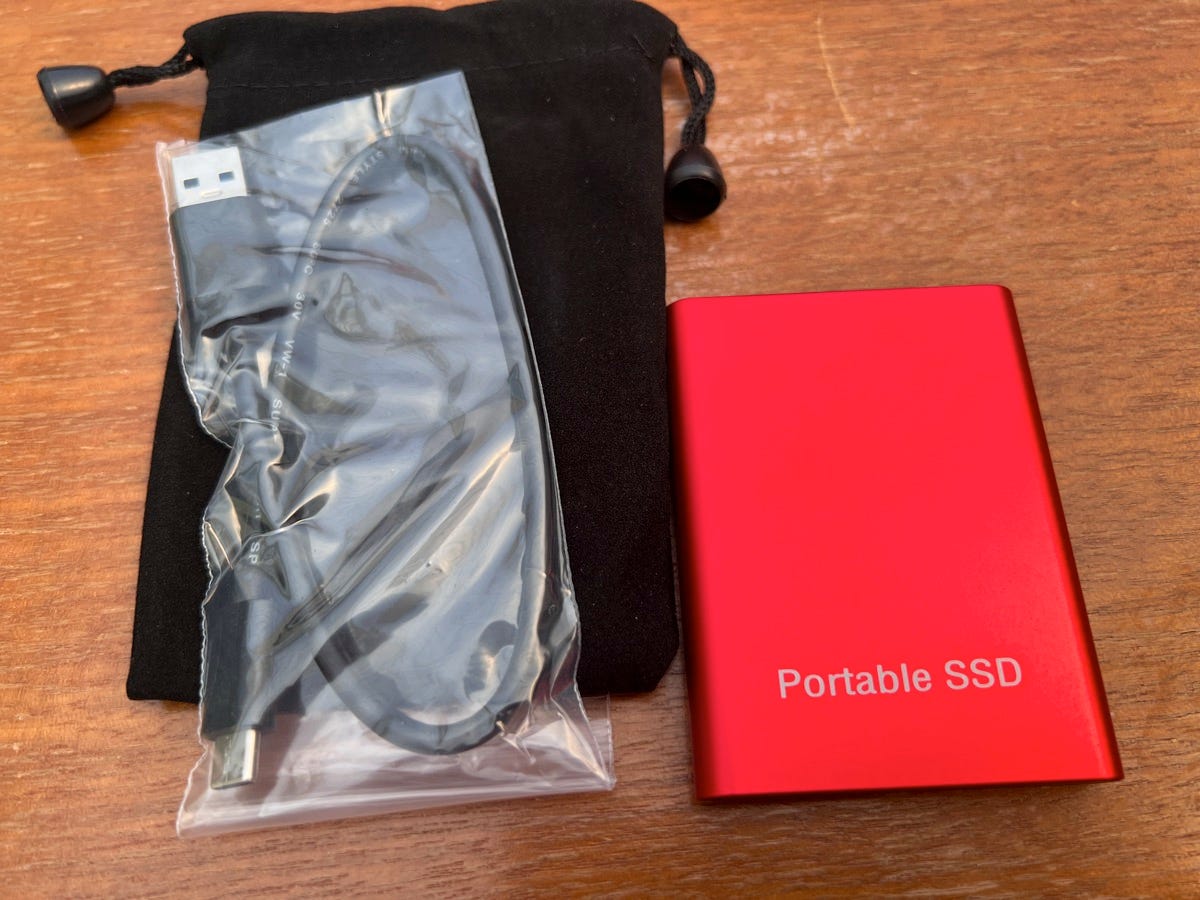
I grabbed my tools and started digging in, and within seconds I had the guts out and the drive spilled its secrets — there were no M.2 drives inside, but instead a no-name 64GB microSD card fitted into a USB-C microSD card reader.
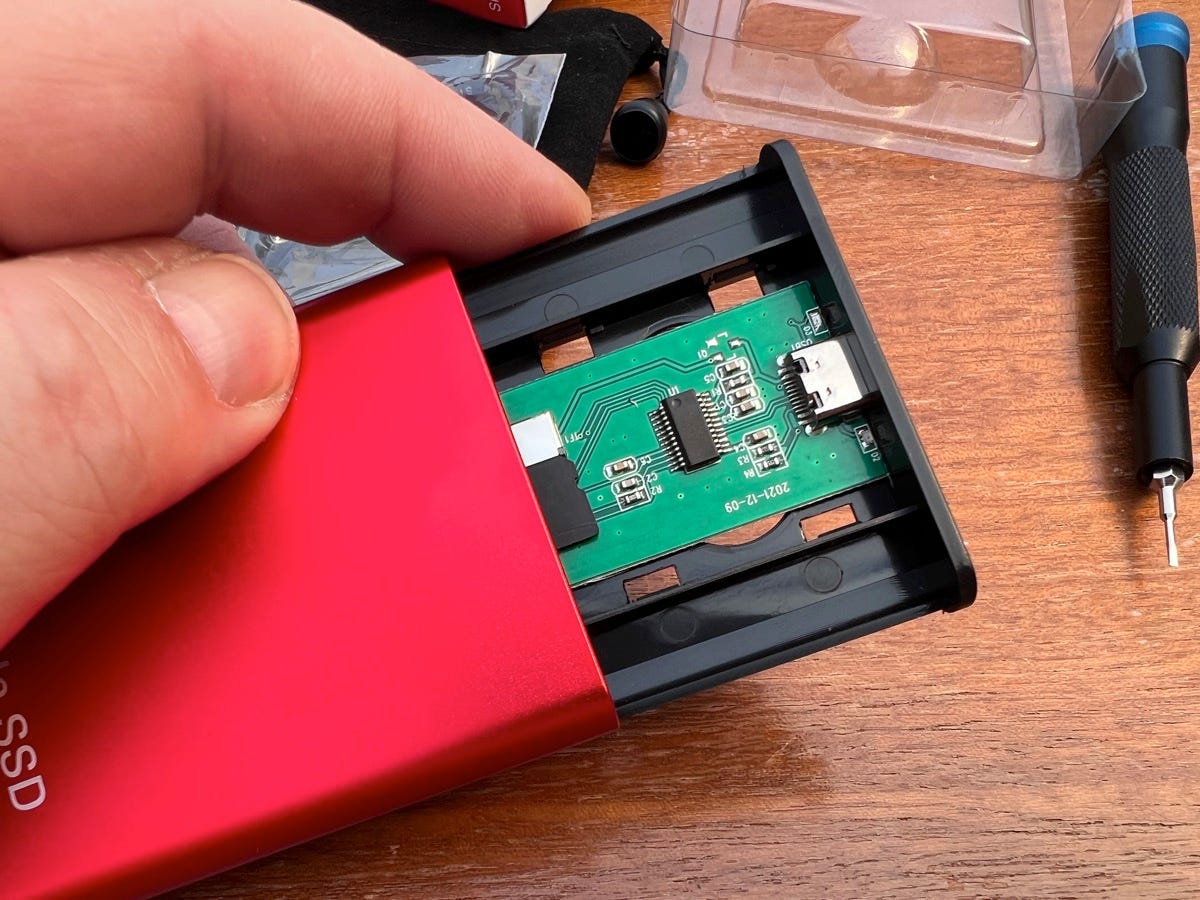
Uncovering the secrets of the drive
No M.2 drive in sight. Instead a microSD card.
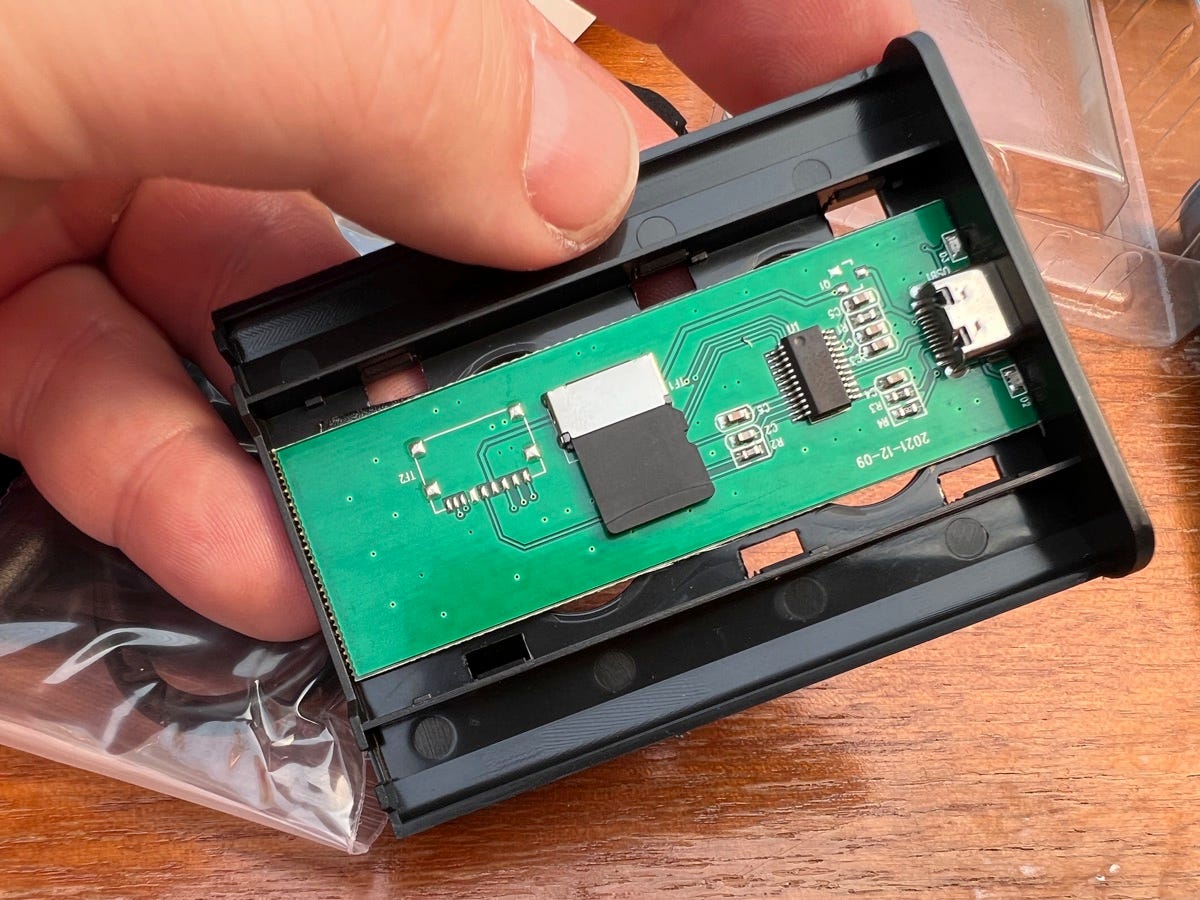
No M.2 drive in sight
Basically, the drive is a USB-C microSD card reader.

USB-C microSD card reader
The microSD card was corrupted and totally unusable. Nothing I tried could bring it to life.
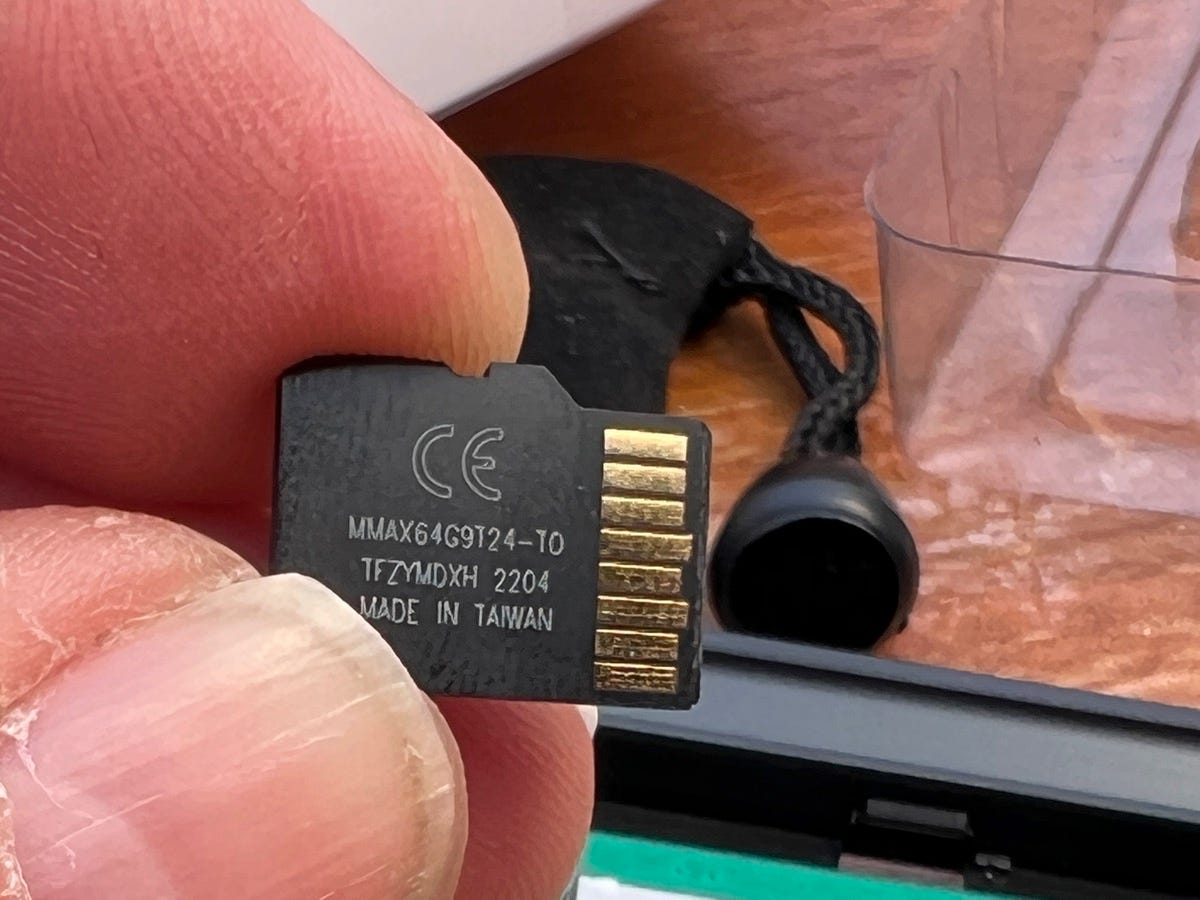
Corrupted 64GB microSD card
Basically, it’s all junk.
Well, the little bag and the USB-A to USB-C cable was nice and all, but not $20 nice.
Remember, if a deal looks too good to be true, it is.






















